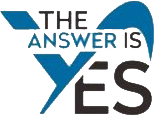
Unpacking the Notion of Power
At its core, power is the capacity to direct or influence the behavior of others or the course of events. This definition forms the foundation for our exploration of the topic.
Positive and Negative Power
Power, when used to inspire, encourage, and foster growth, can create uplifting environments. We'll provide case studies where leaders have leveraged their influence to champion causes and lead by example.
The Dangers of Power Mismanagement
Our next section starkly contrasts the above by outlining the perils of power abuse. Through real-life examples, we demonstrate the far-reaching consequences of using power to manipulate, control, or oppress.

Establishing a Culture of Feedback
Feedback: The Currency of Effective Power Use
Feedback is highlighted as a pivotal tool for power management and relational health. We lay out structures for giving and receiving feedback that are conducive to a growth mindset and empower individuals to harness their influence positively.
Creating a Feedback-Rich Environment
Our final sections focus on the practicalities of creating an organizational culture where feedback flows freely. We analyze the nuances of feedback-giving and how to ensure it's received constructively.
By the end of this immersive course, readers will not only be adept at recognizing various forms of power, but they’ll also be equipped with the tools to use it judiciously and constructively. Power doesn't need to be a contentious topic—it can be an instrument for driving progress and improved human interaction, both within and outside the boardroom. Join us as we redefine what power means in the modern context, and how to wield it to build a better world, one interaction at a time.
The Effective Use of Power as a Leader
Understanding and wielding power effectively is a crucial skill in every aspect of life, especially in the cutthroat world of business. Power dynamics shape interactions, influence decisions, and set the course for relationships, teams, and even entire organizations. Our latest guide dives deep into the intricacies of power, dissecting its definitions and the myriad ways it can be harnessed for positive change or manipulated for negative ends.

Power Dynamics
Personal and Interpersonal Dynamics
Exploring how individuals interact within a power framework, we'll illustrate scenarios of both healthy and toxic power dynamics.
Understanding Status and Role Power
Teasing apart status and role power, we highlight how these distinct forms of power manifest within organizations and what they mean for navigating the corporate landscape.
The 150 Principle and Differential Impact
Our course material includes a revolutionary concept called the 150 Principle. It suggests that power is most effective within a manageable span of people. We detail its implications and applications in business settings.
Tracking Impact and Responsibly Wielding Power
We'll discuss the importance of tracking both the intentional and the incidental outcomes of power-based actions, emphasizing the need for responsible conduct and ethical practices.


